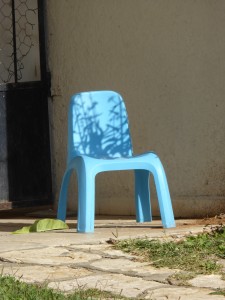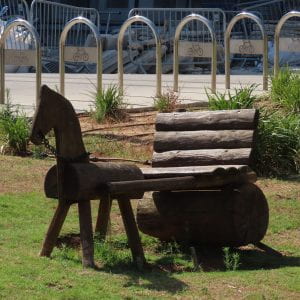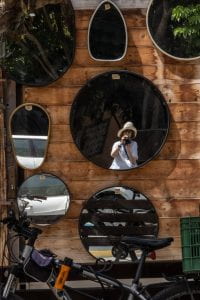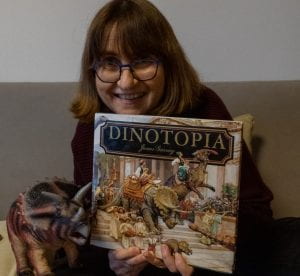
Thank you all for finding time in your busy “literary lives” as world-renowned detectives to join us here today.
Since all of you are known to have extraordinary powers of deduction, I would like to give you a small challenge. Please look at this photo I took of a person’s desk. What can you learn about the person who uses this desk and his/her workplace from this photo?
Hercule Poirot: I don’t even need to use my little grey cells to see that this is a teacher’s desk. She is clearly grading papers!
Naomi: That is correct, but wait! You said “SHE” is grading papers. What makes you think that we’re talking about a female teacher?
Hercule Poirot: “Because I am Hercule Poirot! I do not need to be told.” *
Naomi: Haha! With all due respect, if you were my student I would ask for information from the text (in this case, the photo) that supports your claim.

Sherlock Holmes: I must agree with my colleague on this matter. “You know my method. It is founded upon the observation of trifles.”**
Sherlock Holmes: Look carefully at the photo. Great thought and care have been invested in the exact placement of each object and decoration on this desk, indicating not only a woman’s touch but one who is pedantic and clearly interested in style or design. Even the apple, which is only there temporarily, is neatly cut and placed with care.
Naomi: Pardon me for saying so, but you are from another era – there are men today who are admired for their style. Aren’t you just guessing due to the fact that there are more female teachers in this country?
Sherlock Holmes: I’ll ignore that. Just look at the spectacles on the desk. Not only do they serve as an additional indication, but they are reading glasses. Clearly, this desk belongs to an experienced teacher.

Miss Marple: Gentlemen, do take a look at yourselves! You are so easily distracted by the irrelevant issue of gender, while completely ignoring the true significance of all you see on this desk.
Naomi, you must bear in mind that “Gentleman are frequently not as level-headed as they seem” ***
Naomi: Thank you, Miss Marple. What do you mean?
Miss Marple: This teacher, and the teachers seated near her (this desk is obviously one of many), are clearly required to spend a great many hours at school, well beyond those hours devoted to teaching. One would assume that such hours were allocated as “preparation time” though as someone who specializes in listening to what others say among themselves (certainly not to be confused with eavesdropping!!) I do wonder how much work can be efficiently done when surrounded by so many people…
The investment we see in making one’s workspace comfortable and aesthetically pleasing indicates someone who has decided to make the best of the situation.
Hercule Poirot: (Coughs loudly and pauses before speaking)
My dear Miss Marple, you neglected to mention the evidence that this teacher does not have an administrative role at school.
Naomi: Which evidence is that?
Hercule Poirot: I’m astonished you need to ask that, Naomi. Why even a child would know what being allocated a cubicle (as opposed to an office) signifies…
Lieutenant Columbo: Just one more thing…
(Collective sounds of surprise are heard, as he had not been sent an invitation)
Lieutenant Columbo: Why has no one mentioned that this teacher is not an elementary school teacher? Look at the length of those texts!
Sherlock Holmes: (sighs deeply)
Sherlock Holmes: Even though I did not actually say the following in any of my books, I cannot help myself – we didn’t mention it because it’s E-L-E-M-E-N-T-A-R-Y!
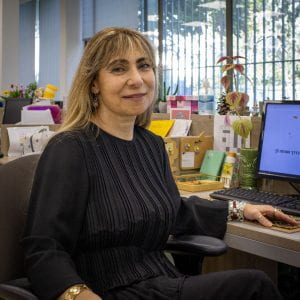
Many thanks to Mali Savir, for “lending” me her desk for this post.
- * “Death on the Nile”, by Agatha Christie
- ** “The Bascombe Valley Mystery” by C. Doyle
- *** “The Body in the Library” by Agatha Christie
